Overview Link to this section
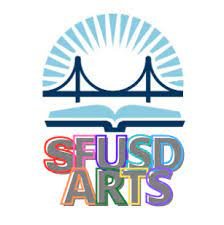
Kindergarten students experience Arts instruction through both integrated activities and stand-alone lessons. Stand-alone lessons come from you as the classroom teacher and via instruction from itinerant visual and performing arts teachers. These lessons focus on engaging students in creative making and performing in response to a prompt or challenge. You are encouraged to expand upon the learning students do with itinerant arts teachers through meaningful and authentic arts integration across the content areas. Use the arts to bring your curriculum to life.
Priority Standards Link to this section
What students will know, what students will do, and what thinking skills students will develop to apply and transfer artistic understandings that endure within the discipline, leverage deeper understandings, and/or support readiness for success at the next grade level.
In Kindergarten focus on these critical areas:
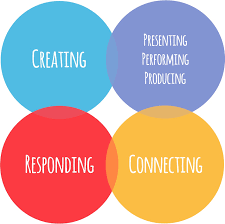
Exploring the cycle of creating, presenting & performing, responding, and connecting to works of art
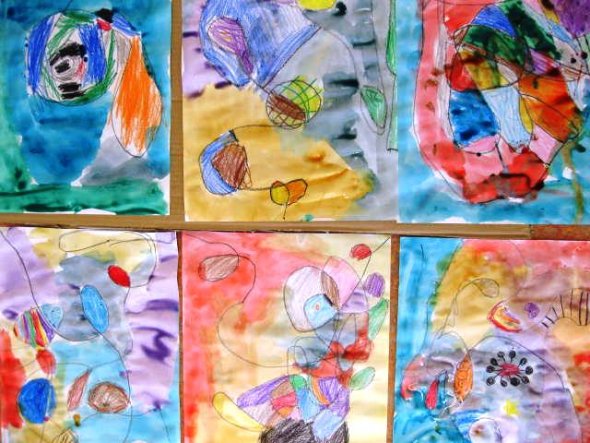
Expressing with increasing creativity, complexity, and depth through 2D and 3D visual art

Expressing through creative movement and creative expression
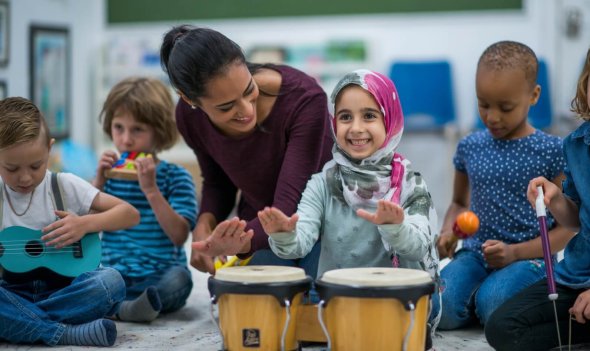
Creating music through instruments, voice, or with objects
Instruction: Signature Elements Link to this section
Below are signature elements of SFUSD Arts instruction that students should experience regularly throughout Kindergarten as they develop as artists (visual artists, dancers, actors, musicians, and creative thinkers).
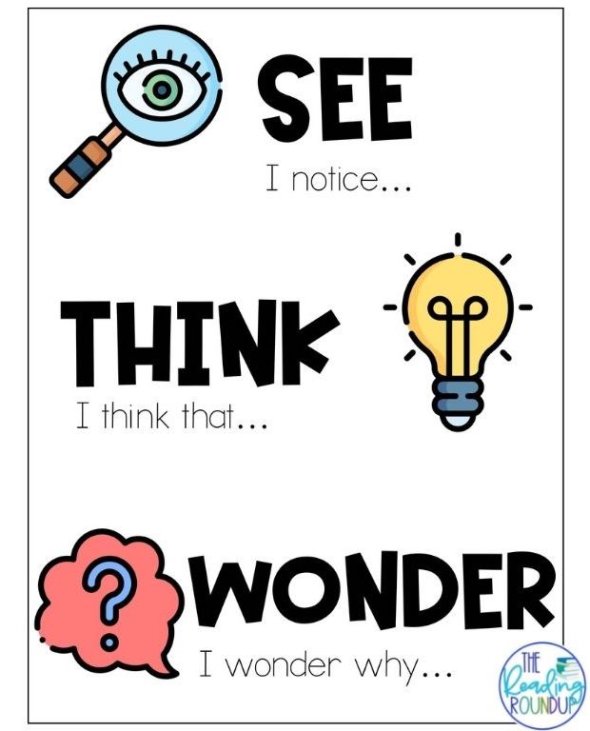
Open-ended Inquiry Exploration
Students explore an image, a movement, a song, or a specific material (paper strips, cardboard, cloth, string, etc) using a thinking strategy like “See (Hear), Think, Wonder,” or [What do you] “Notice, Know, Wonder?
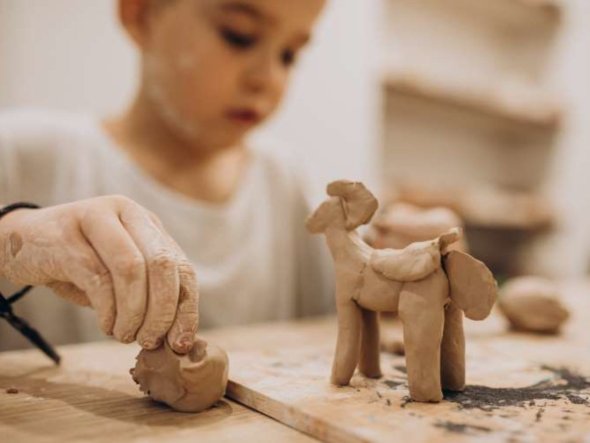
Creating: How artists work and what materials they use
Individually and collaboratively, students explore various art materials through imaginative play. They also engage in open-ended responses and challenges to create products using various materials, techniques, and processes related to music, dance, visual/media art, or drama. Students create artworks that tell stories about their life experiences.

Presenting & Performing: How artists share artwork with others
Students select a personal artwork: sharing a description of it, how it was made, and its significance to them - honoring that often the process is the product. Students are asked open-ended prompts, “Tell us about what you made.” or “How did this experience make you grow as an artist?” with follow-up questions from their teacher, classmates, or the audience.
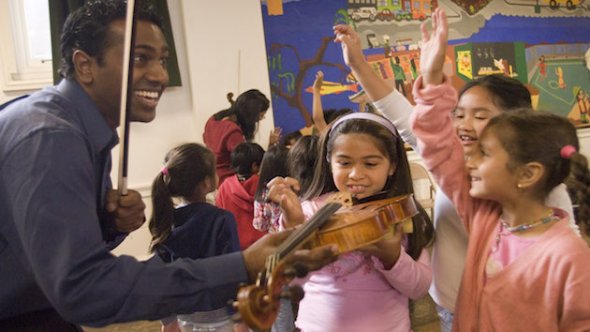
Responding: What we can learn about ourselves and our world by observing art
With support, students observe and describe an artistic work using simple terminology, express an emotional response to the work, and interpret it by identifying the subject matter and describing relevant details.
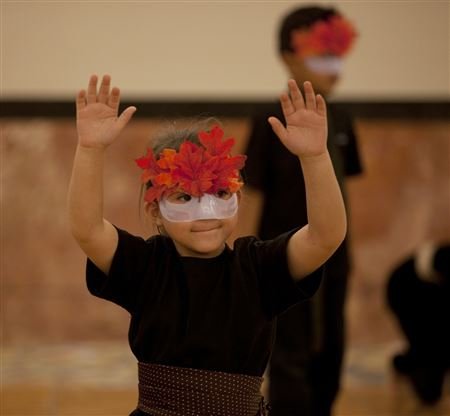
Connecting: How art helps us understand the lives of people, of different times, places and cultures
With support, students identify a purpose of an artwork. They also describe a personal connection to an artist's work of art and create their own art that tells a story.
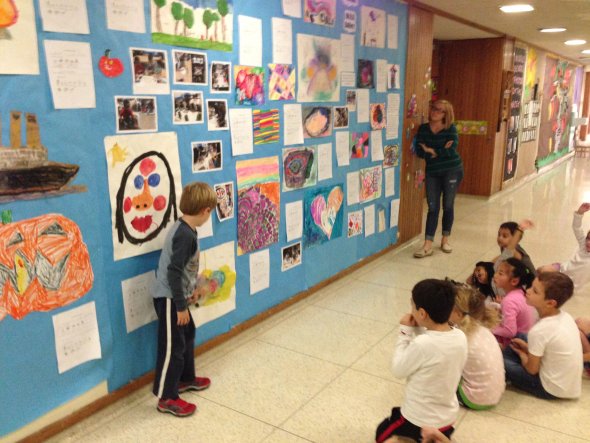
Structured Talk & Reflection Throughout
At the beginning, middle, and end of the time, students participate in a peer critique, gallery walks, or closing circle where students view, celebrate and ask questions about peers' work. They also have moments to pause and reflect on their own process. Closing discussions: “What did you notice in the gallery? What jumped out to you? What surprised you? What would you do differently next time?”
Materials
Below are items you should have to support your students' Arts instruction (make a copy). If you are missing anything from the list, please first contact your site administrator or site Arts Coordinator. Every school has an Arts Coordinator who can guide you and support you in accessing lessons or purchasing your classroom materials for the arts. If they are unable to resolve the issue promptly, please contact Emily Aldama or Ronnie Machado from the SFUSD Arts Team. Your Checklist (Make a copy for yourself)
- Pencils
- Colored pencils
- Markers
- White drawing paper
- Construction or color fadeless paper
- Scissors
- Glue Sticks
- Drying rack or area to store art
- Screen with projector
- Speakers for Audio
- Quaver website
- Goldilocks and the Three Bears Book
- Book of nursery rhymes/ Eric Carle’s Brown Bear
- Hand Percussion instruments/rhythm sticks
- Sing-Along with Putamayo
- Scarves
- Designated presentation space in the classroom and the school (display case, bulletin board, theater/stage, website, social media) to make learning visible
Units
| Discipline | Units/Lessons |
|---|---|
| Dance |
I can:
|
| Music |
I can:
|
| Theater |
I can:
|
| Visual Arts |
I can:
|
Frameworks to support Arts Instruction: Making Thinking Visible, Teaching for Understanding, Studio Habits, Creative Inquiry
Planning Guide
There is no planning guide for kindergarten Arts.
Reflection Questions Link to this section
- How are students' developmental needs, communities, and experiences being reflected and honored, or how could they be?
- What opportunities do you see for developing equitable access & demand, inquiry, collaboration, and assessment for learning?
- What are the implications for your own practice? What strengths can you build upon? What will you do first?
Want More?
Standards
Contact the Arts Team
This page was last updated on May 30, 2023

